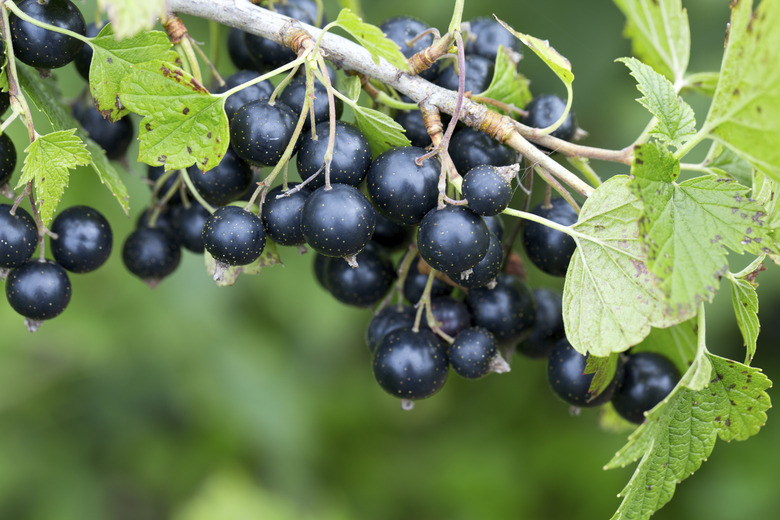The Differences Between Blueberries And Black Currants
Both blueberries and black currants are small, dark-colored berries that grow in dense clusters on the branches of their bushes. The similarities end there, however — the two types of plants are quite different in both their growth preferences and the flavor of their berries.
Blueberry Types and Growth Habits
Blueberry Types and Growth Habits
Blueberries (Vaccinium spp.) are deciduous shrubs that produce clusters of small purple-blue berries in the summer. The sweet berries are highly desirable as a fresh fruit, and are a favorite food of wildlife.
The size of the bushes varies depending on the species. Full-sized bushes, called highbush blueberries, may grow as high as 5 feet with a similar spread, and some varieties of heat-loving rabbiteye blueberries may grow to twice that height. Low-growing species, called lowbush blueberries, tend to hug the ground and may get no taller than a foot or two. Hybrids of lowbush and highbush types, called half-high bushes, grow to somewhere in between and have been developed largely for their cold tolerance.
Black Currant Types and Growth Habits
Black Currant Types and Growth Habits
The European black currant (Ribes nigrum) is a deciduous shrub that reaches a height of about 6 feet. American black currant (Ribes americanum), also sometimes called wild black currant, is a low-growing shrub that generally grows to between 3 and 6 feet in height; it is native to North America and is considered an invasive weed in some areas.
Both species produce small, purple-black berries in the summer. The flavor of the berries is significantly more tart than that of blueberries, and black currants are more often used in jams and jellies than they are eaten fresh.
Soil Preferences
Soil Preferences
Blueberries' need for acidic soil is one of the plant's defining characteristics; blueberries simply will not flourish or produce well unless they're grown in soil with a pH level between 4 and 5. Black currants, by contrast, don't like acidic soil and do best when the soil pH is near neutral, with a level between 6.7 and 7. However, both plants like well-drained soil that's rich in organic matter. Blueberries are especially intolerant of excessive moisture, and their shallow root systems are easily damaged by standing water.
Winter Hardiness
Winter Hardiness
European black currants are winter hardy in U.S. Department of Agriculture plant hardiness zones 4 to 8; wild black currants are hardy in USDA zones 3 to 6. The bushes can withstand winter cold in these zones, but their flowers may be damaged by freezing temperatures in the spring. Highbush blueberries (Vaccinium corymbosum) are somewhat more sensitive to cold and more tolerant of heat; they are hardy in USDA zones 5 to 9. Lowbush blueberries (Vaccinium angustifolium) are, in general, more cold hardy; some varieties are hardy in USDA zones 2 to 8. Rabbiteye blueberries (Vaccinium ashei) are the least cold tolerant of the blueberry species — they can handle winters only in USDA zones 8 to 10.
References
- Backyard Gardener: Vaccinium Ashei
- American Beauties Native Plants: Vaccinium Angustifolium
- Clemson University: Vaccinium Corymbosum
- Backyard Gardener: Black Currants & Red Currants — Ribes
- Plants for a Future: Ribes Nigrum
- U.S. Highbush Blueberry Council: Highbush Blueberry Gardening
- Izel: Ribes Americanum
